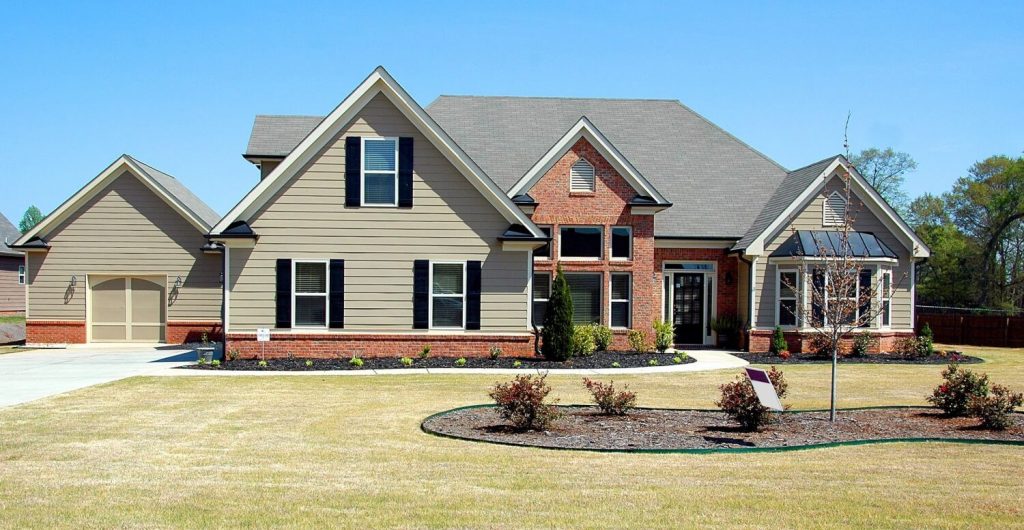Quick Summary of the 70% Rule
Maximum Offer Price = After Repair Value * 70% – Repair Costs
Table of Contents
What Is the 70% Rule in Real Estate?
The 70% Rule offers a quick and convenient way to calculate the maximum purchase price when executing a house flipping deal.
To use the 70 Rule, you need to know the After Repair Value (ARV) of the investment property that you are hoping to flip. Once you have the ARV, you simply multiply it by 70% and then deduct the expected rehab costs, in order to workout the maximum purchase price that you should offer on the house.
By using this real estate investing rule, you are effectively building a 30% profit margin into the house flipping deal, but you must keep in mind that financing costs, closing costs, lender fees, mortgage points and carrying costs will decrease the net profit that you will make when the house is eventually sold.
What Is the 70% Rule Formula?
Maximum Offer Price = After Repair Value * 70% – Repair Costs
As you can see, there are two key components that you need to know before you can calculate an offer price that should be profitable. Let’s take a closer look at each component.
Key Component 1 - After repair value (ARV)
First and foremost, you need to generate an accurate estimate of what the home will be worth after the renovations have completed. The best way to do this is through analyzing the last known selling price of comparable properties (comps) in the area.
Once you have identified properties with similar features (number of bedrooms, bathrooms, square footage, floors etc) and accessed the selling price (preferably less than 9 months old), you can formulate a reasonably accurate estimate of what the house will be worth after the rehab work is complete. If you need more details on how to complete this step, you should find the following three resources pretty helpful.
ARV Calculator: New Silver’s ARV Calculator can help you find comparable properties and it lists the last known selling price. You simply need to enter in the property address
How To Calculate ARV: This article explains how to workout the After Rehab Value manually, with simple examples.
How To Get Comps On A House: The guide provides several methods that you can use to find comps.
Key Component 2 - Estimated Repair Costs
When flipping houses, the rehab costs can make or break the profitability of the deal. It is surprisingly common for property investors to overestimate the repair costs, partially due to inexperience, and partially because it makes the safety margin of the deal even greater.
However, if your renovation cost estimates are too steep, you might be pricing yourself out of the deal before it even gets off the ground. For this reason, it makes sense to research all labor and repair costs in detail before inserting your final estimated repair costs into the 70 rule formula.
Example of How To Use The 70% rule
At this point, it makes sense to use an example in order to see the formula in action. To do so, we will list the property details, and then plug those details into the formula.
Property Details
- After Repair Value (ARV): $350,000
- Repair Costs: $65,000
70% Rule Formula
- Max Purchase Price = (ARV * 70%) – Repair Costs
- Max Purchase Price = ($350,000 * 0,7) – $65,000
- Max Purchase Price: $180,000
As you can see, using the 70% rule has left us with a final amount of $180,000. You can use this amount as a guideline for your offer, although it will likely require some tweaking to find a number that works for you and the seller of the property.
How accurate is the 70% rule in house flipping?
The underlying objective of the 70 percent rule is to prevent you from paying too much for a fix and flip property. If you evaluate the rule from this perspective, it should serve as a good starting point for most real estate investors.
However, it is only a starting point, and the onus is on you to complete a more detailed financial analysis of all the costs involved in the deal. On this point, New Silver’s Hard Money Loan Calculator can walk you through all the known costs typically involved when flipping houses, but you can also view most of these costs in the bullet point below.
What costs aren't accounted for by the 70 percent rule?
As stated earlier, the broad goal of the rule is to build in a profit margin that can cover all the known costs when flipping a house, while still leaving a sizable net profit. With that being said, it is definitely worth noting that the following costs must be accounted for in your financial analysis of the fix and flip.
- Financing Costs
- hard money loan Repayments
- Loan Origination Fee
- Mortgage Points
- Closing Costs
- Carrying Costs
- Property Taxes
- Insurance Costs
- HOA / Condo Fees
- Utility Costs
- Selling Costs
- Realtor Fees
- Transfer & Conveyance Fees
As you can see, there are a number of additional costs that you will incurr when flipping houses. It is your responsibility to keep these extra costs in mind when estimating the average net profit that are likely to make during the deal.
Does using the 70% rule guarantee a profit?
There is no guarantee of generating a profit when flipping houses. For instance, if you experience lengthy delays when trying to sell the house, it’s entirely possible that your hard money loan could expire, which would introduce the possibility of losing the house to foreclosure.
However, if you stick within the guidelines specified by the rule, and you complete all the renovations on budget, there’s a very good chance that the deal will be highly profitable.
Is it okay to break the 70% Rule?
There are two common situations where it can be acceptable to break this rule.
1 – If you are a real estate agent: The main reason estate agents can get away with breaking the 70% rule is because they can save significant amounts of money by avoiding real estate agent fees when the property is sold. These are typically between 2-5% of the sale price, giving real estate agents an extra bit of leeway that other investors don’t really have.
2 – If you are an experienced property flipper with multiple projects under your belt: Highly experienced property flippers can get away with taking on a bit more risk, and may increase the offer to as much as 75%-80% of the ARV (minus repair costs).
However, if you are still in the early stages of your property investing career, it is best to avoid taking on any unnecessary risks. Staying relatively close to the baseline figure suggested by the 70% rule can help ensure your first flip is profitable, even if you have less experience.
Biggest Risks When Using the 70% Rule
1 – Veering too far off the 70% guideline – The 70% rule is ultimately just a convenient way to stay within relatively safe financial parameters. If you are too aggressive, increasing your offer to 75% or even 80%, you could introduce the possibility of making a loss if the market conditions aren’t favourable when you sell.
2 – Banking on yearly property appreciation – This mistake is best to avoid. If you factor industry based property appreciation into the after repair value estimate, you may end up paying too much for the property. This mistake could then be exacerbated if market conditions take a turn for the worse, and the property actually depreciates over time.
Obviously you need to be confident that your renovations will drastically improve the property value, but don’t add an extra few percent because the general area is trending upwards. Sticking to reliable ARV estimates based on comparable properties in the area can help you avoid this mistake.
3 – Failing to consider all the costs involved in a flip: The beauty of the 70% rule is that it only requires two elements to calculate the maximum purchase price. However, this simplicity could prove to be your downfall if you don’t fully understand all the costs that you can expect with a fix and flip. Again, using a fix and flip calculator can give you a more complete picture of all the expenses that you can expect.
4 – Overestimating rehab costs – By overestimating the repair costs, your maximum purchase price may end up being too low for the seller to take your offer seriously. While it is perfectly understandable to be conservative with repair costs estimates, they still need to be realistic.
5 – Underestimating rehab costs – The main drawback here is decreased potential for profitability. If you underestimate repair costs, you may end up using significantly more funds than initially expected in order to complete the renovations.
Final Thoughts
When all is said and done, the 70% rule continues to be a reliable way to create a guideline amount for the maximum purchase price when executing a fix and flip. This method may require additional fine tuning in order to work out the final offer, but when prospecting properties and analyzing deals, it remains a tried and trusted shortcut for property investors.
FAQ
What is the 70% rule in house flipping?
In house flipping, the 70% rule is used to calculate the maximum allowable offer that an investor should aim for when purchasing a house that they intend to fix and flip.
How do you calculate a 70% rule?
Using the 70 percent rule is pretty straightforward. To calculate the maximum price that you should offer when flipping a house, multiply the After Rehab Value by 70%, then deduct the Renovation Costs.
What does 70 of ARV mean?
70 of ARV means 70% of the After Repair Value of the house. The term is usually used by hard money lenders to describe what percentage of the post renovation price they are willing to loan you. Some lenders will provide more than 70 of ARV, while some might offer less.
Rule of 70 vs 70 Percent Rule
It is worth clarifying that the 70 percent rule in real estate investing is completely separate from the financial rule of 70.
The purpose of the house flipping rule is to establish a profitable offer price when flipping a house.
The purpose of the financial rule of 70 is to calculate how long it takes for an investment to double in value. Using the rule of 70, you simply need to divide 70 by the interest rate (eg 8%) to workout how long it take for the investment to double in value.
- Eg 1: 70 / 8% interest rate = 8.75 Years
- Eg 2: 70 / 10% interest rate = 7 Years
So, while these rules share similar names, they are entirely separate concepts.



